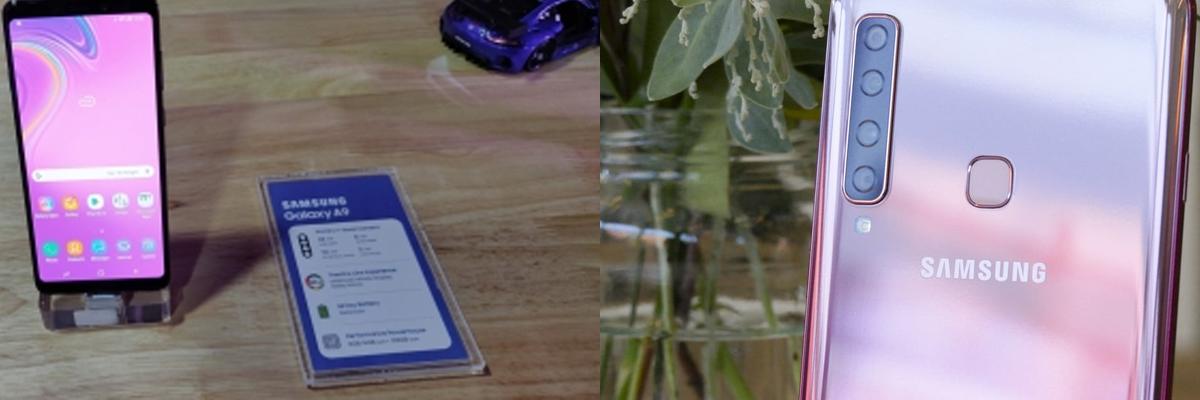Live
- ‘Get Set, Grow Summit 2024’ Focuses on Digital Detox for Families
- Stokes motivates his team to put in extra effort, says England pacer Potts
- From overcoming setbacks to leading India in U19 Women’s Asia Cup, Niki Prasad's amazing journey
- Driving Enterprise Security: Inside Venkata Reddy Thummala’s Leadership Journey
- Constitution debate: PM Modi hails 'Nari Shakti'; makes strong pitch for 'United Bharat’
- Abhijeet Bhardwaj: Revolutionizing Enterprise Analytics with Innovation and Expertise
- Bihar: Inquiry initiated against principal who went to buy veggies during school hours
- Press Sri Lankan Prez for release of Indian fishermen: TN Cong MP to EAM Jaishankar
- TN: DMK postpones executive meet due to heavy rains & Parliament session
- Porous silicon oxide electrodes can fix durability issues in batteries: Researchers
Just In

DJ Koh, President and CEO of IT and Mobile Communications Division, Samsung Electronics, decided to change his strategy for the Indian market this year
New Delhi: DJ Koh, President and CEO of IT and Mobile Communications Division, Samsung Electronics, decided to change his strategy for the Indian market this year.
After seeing Chinese players getting the upper hand on innovations in the camera department, Koh geared up to alter course.
First came the Samsung Galaxy A7 with a three-rear camera system and now, Galaxy A9 with a monster four-rear camera system - the world's first -- has created ripples in the Indian market.
Galaxy A9 with dual tone, reflective gradient design, vibrant colours, scratch-resistant durable glass back and flagship infinity display has upped the ante in the fast-growing camera smartphone segment.
The 6GB/128GB and 8GB/128GB variants of Galaxy A9 cost Rs 36,990 and Rs 39,990, respectively.
Let us see why this device is a game changer when it comes to the future of mobile camera hardware - especially in the super-hot Rs 30,000-Rs 40,000 segment where OnePlus is a current leader.
Since camera is the focus, Galaxy A9's vertically-stacked rear camera system comes with a telephoto lens capable of 2x optical zoom that allows to take crisp, detailed shots -- even from a distance.
Try it for macro-photography, wildlife photography and situations where you need to get up-close to the action.
With Galaxy A9's 24MP main lens, you can capture clear and bright images in both bright and low-light conditions.
In low-light conditions, the A9 allowed more light and we could see good results (on certain days, in a clear weather sans smog).
The Depth Lens gives the freedom to manually manage the photos' depth of field and focus on the subject for stunning, professional looking images.
Galaxy A9's "Ultra-Wide Angle" camera allowed us to capture not only the subject but the whole scene.
The company says that at present, most smartphones capture 77 degrees in their field of view.
On the other hand, Galaxy A9 is able to capture 120 degrees -- helping capture more expansive photos, just like what our eyes see.
This comes in handy when you need to capture landscapes, group shoots or situations where you need to fit a lot into a single frame.
The front camera houses a 24MP sensor for selfie lovers.
The device comes with a larger and wider 6.3 Super AMOLED infinity display for immersive viewing experience which is further enhanced by Dolby Atmos surround sound, making it a delightful entertainment device.
The smartphone is powered by Octa-Core Snapdragon 660 processor and a large 3800mAh battery with fast charging capability that gave it high-speed performance for almost a day.
Galaxy A9 automatically recognises 19 kinds of scenes and optimises colour settings to suit the content - whether it is a nightscape, a field of flowers, or a plate of food.
The device can also intelligently detect when there is a flaw in an image and immediately notifies the user.
Galaxy A9 features virtual assistant Bixby, Samsung Pay and Samsung Health.
For multi-tasking, App Pair allows users to launch two apps at once on a split screen.
The device with 3D Glass-curved back runs Android 8.0 (Oreo) and is available in three colours -- Caviar Black, Lemonade Blue and Bubblegum Pink (the last one was reviewed).
It also has a rear-mounted fingerprint sensor and face recognition support.
What doesn't work?
The only big department where it lags behind the high-selling OnePlus 6T is the processor.
Although Snapdragon 660 is famous to power mid-range devices but at its price point, OnePlus houses Snapdragon 845 processor which is better for high-density usage like 4K video streaming and gaming for a longer duration.
Conclusion: The best camera device in the Rs 30,000-Rs 40,000 price segment that comes with the trust Samsung has earned in the Indian market. Putting your money on the world's first four-camera smartphone in Galaxy A9 won't disappoint you.

© 2024 Hyderabad Media House Limited/The Hans India. All rights reserved. Powered by hocalwire.com







